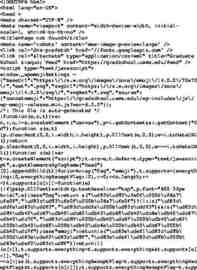Strategic Planning Understand Strategy and how it differs from plans,
28 Slides122.50 KB
Strategic Planning Understand Strategy and how it differs from plans, and tactics Look at models of strategy development Understand the process of strategy development Product Life Cycle and Generic Strategies
7.2 Functions of Planning 1) Identifying future opportunities 2) Identifying and avoiding future problems 3) Developing courses of action 4) Understanding the risks and uncertainties associated with various options
Strategy The major courses of action that an organization should take to achieve its goals Plans-deal more with actions that should be taken Tactics-specific moves
Intended and Realized Strategies Intended-Plans that managers develop Realized-What actions actually occur Unrealized-Plans that never occur Emergent Strategy-Unplanned actions that occur
de tsi s Ou rce Fo Intended Strategy Emergent Strategy Realized Strategy Unrealized Strategy
SWOT Analysis Internal Strengths and Weaknesses External Opportunities and Threats in the business environment
Core Competencies Strengths that make an organization distinctive from competitors Groups of sustainable competitive advantages
External-O’s and T’s Porter’s Five Forces Model-P94 Threat of New Entrants Supplier Bargaining Power Customer Bargaining Power Substitute Goods or Services Rivalry of Existing Firms
Product Life Cycle Market phases that products usually go through during their lifetimes Introduction Growth Maturity Decline Termination
7.10 High Basic Product Life Cycle Model Autos Sales Volume Airlines Breakfast cereals Biogenetics Electric cars Low Introduction Black and white TV Cigarettes Cellular phones PCs Slide rule Software Drive-ins Growth Maturity Decline Termination Time Adapted from Figure 7.4
Diversification The variety of goods or services provided by the firm Focused Strategy Dominant Business Related Diversification Unrelated Diversification
The Risks and Opportunities of Diversification 7.4 Identifying the Risks and Opportunities of Diversification What can we do better than any of our competitors if we enter a new market? What strategic assets are needed to succeed in the new market? Are there synergies to be realized? Will we be simply a player in the new market or will we emerge a winner? What can we learn by diversifying, and are we sufficiently organized to learn it?
Level of Diversification and Planning Broad 7.5 GE Scope of strategic planning ABB Dick Clark Productions Cemex Southwest Airlines Narrow Low High Singlebusiness firm Dominant- Relatedbusiness business firm firm Level of diversification Unrelatedbusinesses firm Adapted from Figure 7.1
Single-Business Strategy Serves one segment of a particular market with the intent of being the BEST Examples Southwest Airlines Intel
Dominant Business Serves various segments of a single market Examples GM Trucks, Cars, Semi’s
Related Diversification A variety of similar goods or services Concentric Growth Strategy Synergies are realized Examples GM Microsoft Honda
Unrelated Diversification Provide diverse products to different markets Conglomerate Growth Strategy Examples GE ABB Mitsubuishi
Corporate Level Strategy Guides the overall direction of the firm deciding what SBU’s to keep, develop, purchase, or sell
Strategic Business Unit SBU-a division or subsidiary of a firm that operates relatively independently Examples pizza hut, taco bell, kfc IBM computers, mainframes, financial other examples?
Growth Strategies Think of facing the ultimate customer Forward Integration-when a firm buys its customers Backward Integration-when a firm buys its suppliers Horizontal Integration-when a firm buys its competitors
Growth Strategies (cont) Market Penetration-development of current markets with current products Market Development-seeking new markets for current products Product Development-new or improved products for the current market
Business Level Strategies Strategies of SBU’s What is the market What are the customer needs to be filled How will they be satisfied
Generic Strategies Henry Mintzberg-P245 3 basic business strategies Differentiation Low-cost Focus/Niche Question Can the 3 basic strategies be combined?
7.12 Broad Generic Strategies Model Differentiation strategy Cost leadership strategy Strategic Target Focus strategy Narrow Uniqueness Low Cost (price) Source of Advantage Source: Adapted with permission of The Free Press, a Division of Simon & Schuster, Inc. from Competitive Strategy: Techniques for Analyzing Industries and Competitors (p. 39) by Michael E. Porter, Copyright 1980 by The Free Press. Adapted from Figure 7.6
Application of the Generic Strategies Model Business-Level Strategy Feature Differentiation Premium Quality Lexus - autos Brand image Compaq - PCs Technological leadership Gillette - razors Customer service Maytag - appliances Nike - shoes 7.13 Company Examples Adapted from Table 7.4
7.14 Application of the Generic Strategies Model (contd.) Business-Level Strategy Feature Company Examples Cost leadership Tight cost controls Discount Tires - tire replacement Efficient scale of facilities Motel 6 - travel accommodations Efficient service, sales force, and advertising Wal-Mart - retailing Competitive pricing UPS - package delivery Adapted from Table 7.4
7.15 Application of the Generic Strategies Model (contd.) Business-Level Strategy Focus Feature Company Examples Careful identification of target market (niche) Nieman Marcus - elite retailing Cost leadership emphasis or differentiation emphasis Dick Clark Productions Constant review of customer demand in niche Polo - clothing Rolex - watches Adapted from Table 7.4
Where to from here? We have touched on the areas of: Organizational Behavior Human Resource Management Strategic Management What careers are there in each area? What classes can I take in the areas? MGT410,MGT499,MGT320,MGT340,MGT491

































